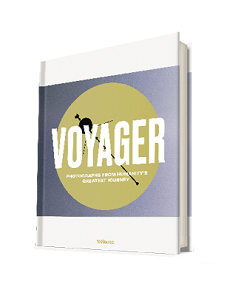It is an incredible four-and-a-half decades since the two Voyager spacecraft were launched to the outer solar system and, arguably, anyone who hasn’t heard of them just hasn’t been paying attention. Indeed, this book’s subtitle goes as far as to suggest that the flights of these two space probes represent “humanity’s greatest journey”. While Apollo aficionados might have something to say about this, they would not deny the Voyager programme’s esteemed status in the field of what used to be called unmanned space exploration.
Hair-splitting apart, this is a great celebration of the Voyager imagery and, by implication, the technology that made it all possible. The book is a large format (24 x 35cm) volume containing some 200 colour and 100 monochrome images. It’s unclear whether it is intentional, but the font used for the text is a sans-serif typeface reminiscent of books produced when Voyager was young and, though strange to contemporary eyes, it seems to fit well with the images.
Rather than concentrate on the most famous Voyager images for this book, the authors decided to choose them for their scientific importance and even reprocessed some raw image files to highlight “the aesthetic beauty and to bring out the hidden details”, for which ‘full marks!’. No-one can fail to find the images of Saturn’s ring system beautiful, but I was suddenly struck by the similarity between a high-resolution ring image and the grooves of the Voyager Golden Record (which is also discussed in the book).
There is plenty of text to place the images in perspective, but sadly no index for the serious reader. Nevertheless, with the help of books like this, Voyager will continue as a proud icon of our technological heritage.











